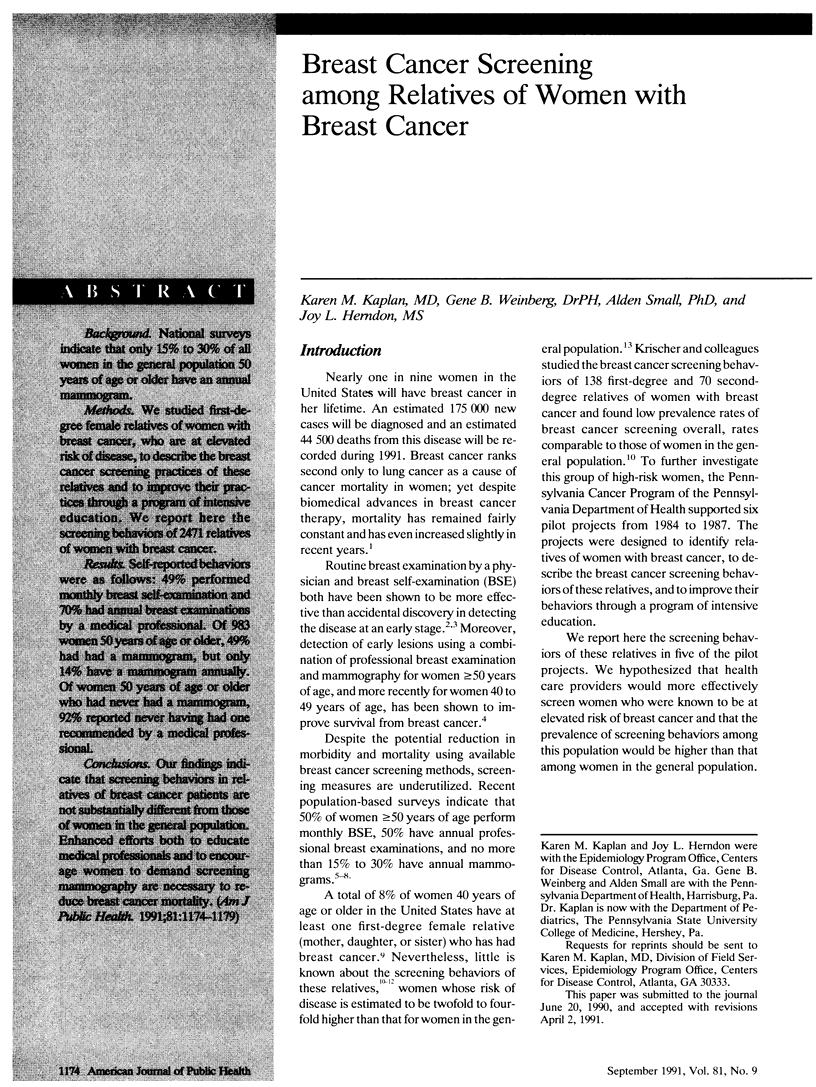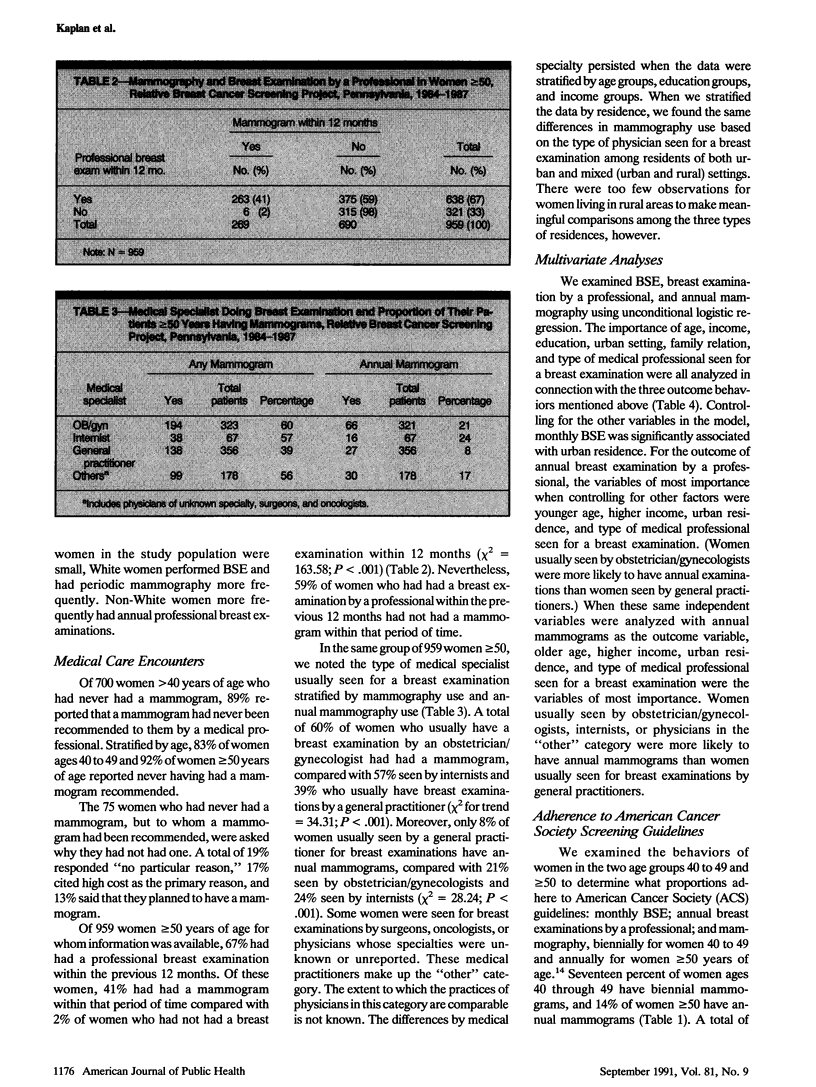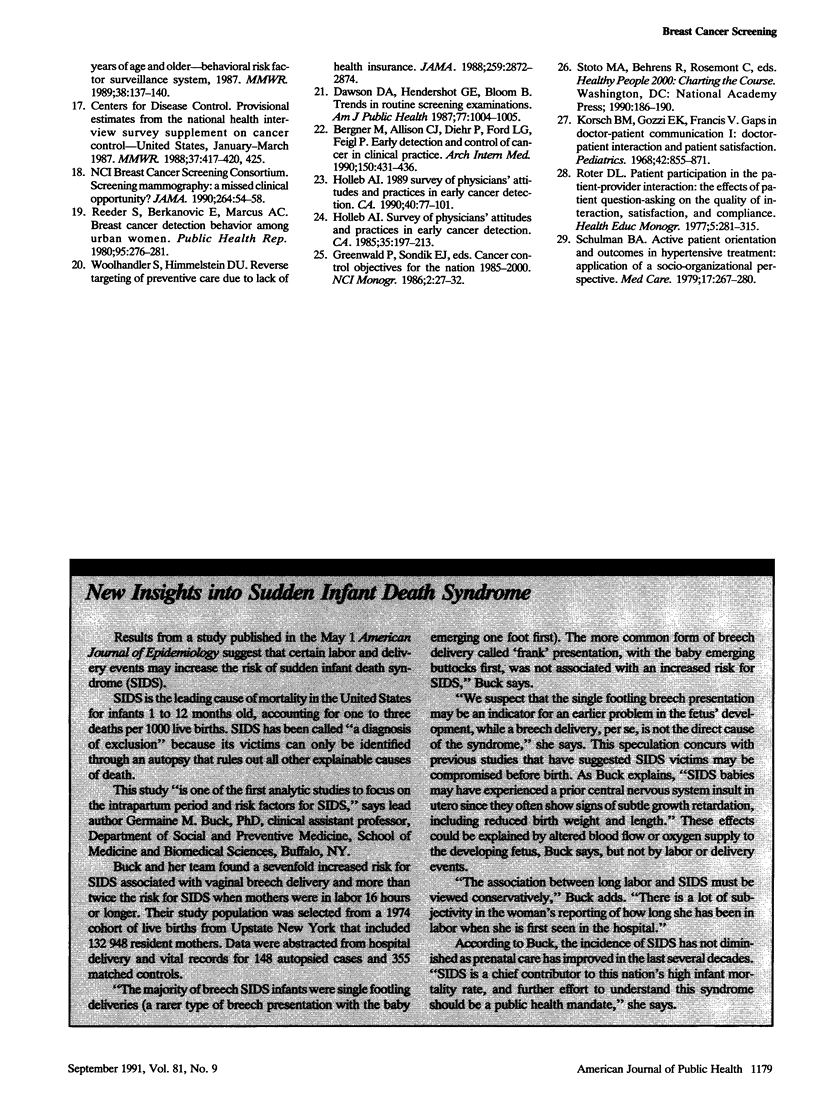Abstract
BACKGROUND. National surveys indicate that only 15% to 30% of all women in the general population 50 years of age or older have an annual mammogram. METHODS. We studied first-degree female relatives of women with breast cancer, who are at elevated risk of disease, to describe the breast cancer screening practices of these relatives and to improve their practices through a program of intensive education. We report here the screening behaviors of 2471 relatives of women with breast cancer. RESULTS. Self-reported behaviors were as follows: 49% performed monthly breast self-examination and 70% had annual breast examinations by a medical professional. Of 983 women 50 years of age or older, 49% had had a mammogram, but only 14% have a mammogram annually. Of women 50 years of age or older who had never had a mammogram, 92% reported never having had one recommended by a medical professional. CONCLUSIONS. Our findings indicate that screening behaviors in relatives of breast cancer patients are not substantially different from those of women in the general population. Enhanced efforts both to educate medical professionals and to encourage women to demand screening mammography are necessary to reduce breast cancer mortality.
Full text
PDF





Selected References
These references are in PubMed. This may not be the complete list of references from this article.
- Bergner M., Allison C. J., Diehr P., Ford L. G., Feigl P. Early detection and control of cancer in clinical practice. Arch Intern Med. 1990 Feb;150(2):431–436. [PubMed] [Google Scholar]
- Boring C. C., Squires T. S., Tong T. Cancer statistics, 1991. CA Cancer J Clin. 1991 Jan-Feb;41(1):19–36. doi: 10.3322/canjclin.41.1.19. [DOI] [PubMed] [Google Scholar]
- Chu K. C., Smart C. R., Tarone R. E. Analysis of breast cancer mortality and stage distribution by age for the Health Insurance Plan clinical trial. J Natl Cancer Inst. 1988 Sep 21;80(14):1125–1132. doi: 10.1093/jnci/80.14.1125. [DOI] [PubMed] [Google Scholar]
- Dawson D. A., Hendershot G. E., Bloom B. Trends in routine screening examinations. Am J Public Health. 1987 Aug;77(8):1004–1005. doi: 10.2105/ajph.77.8.1004. [DOI] [PMC free article] [PubMed] [Google Scholar]
- Dworsky R., Paganini-Hill A., Spicer D. Breast cancer screening and education in high risk women. Prog Clin Biol Res. 1989;293:115–124. [PubMed] [Google Scholar]
- Foster R. S., Jr, Lang S. P., Costanza M. C., Worden J. K., Haines C. R., Yates J. W. Breast self-examination practices and breast-cancer stage. N Engl J Med. 1978 Aug 10;299(6):265–270. doi: 10.1056/NEJM197808102990601. [DOI] [PubMed] [Google Scholar]
- Greenwald P., Nasca P. C., Lawrence C. E., Horton J., McGarrah R. P., Gabriele T., Carlton K. Estimated effect of breast self-examination and routine physician examinations on breast-cancer mortality. N Engl J Med. 1978 Aug 10;299(6):271–273. doi: 10.1056/NEJM197808102990602. [DOI] [PubMed] [Google Scholar]
- Hayward R. A., Shapiro M. F., Freeman H. E., Corey C. R. Who gets screened for cervical and breast cancer? Results from a new national survey. Arch Intern Med. 1988 May;148(5):1177–1181. [PubMed] [Google Scholar]
- Korsch B. M., Gozzi E. K., Francis V. Gaps in doctor-patient communication. 1. Doctor-patient interaction and patient satisfaction. Pediatrics. 1968 Nov;42(5):855–871. [PubMed] [Google Scholar]
- Krischer J. P., Cook B., Weiner R. S. Identification and screening of women at high risk of breast cancer. Cancer Detect Prev. 1988;13(1):65–74. [PubMed] [Google Scholar]
- Reeder S., Berkanovic E., Marcus A. C. Breast cancer detection behavior among urban women. Public Health Rep. 1980 May-Jun;95(3):276–281. [PMC free article] [PubMed] [Google Scholar]
- Roter D. L. Patient participation in the patient-provider interaction: the effects of patient question asking on the quality of interaction, satisfaction and compliance. Health Educ Monogr. 1977 Winter;5(4):281–315. doi: 10.1177/109019817700500402. [DOI] [PubMed] [Google Scholar]
- Schulman B. A. Active patient orientation and outcomes in hypertensive treatment: application of a socio-organizational perspective. Med Care. 1979 Mar;17(3):267–280. doi: 10.1097/00005650-197903000-00004. [DOI] [PubMed] [Google Scholar]
- Survey of physicians' attitudes and practices in early cancer detection. CA Cancer J Clin. 1985 Jul-Aug;35(4):197–213. doi: 10.3322/canjclin.35.4.197. [DOI] [PubMed] [Google Scholar]
- Taplin S., Anderman C., Grothaus L. Breast cancer risk and participation in mammographic screening. Am J Public Health. 1989 Nov;79(11):1494–1498. doi: 10.2105/ajph.79.11.1494. [DOI] [PMC free article] [PubMed] [Google Scholar]
- Woolhandler S., Himmelstein D. U. Reverse targeting of preventive care due to lack of health insurance. JAMA. 1988 May 20;259(19):2872–2874. [PubMed] [Google Scholar]


